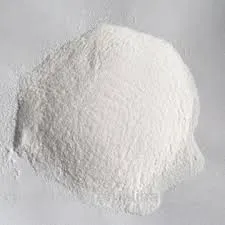
Dec . 10, 2024 08:13 Back to list
Hydroxyethyl Cellulose Applications in Paint Formulations and Coatings Technology
The Role of Hydroxyethyl Cellulose in Paint Formulations
Hydroxyethyl cellulose (HEC) is a versatile, water-soluble polymer derived from cellulose, a natural polymer sourced from plant cell walls. HEC has gained significant importance in various industries, particularly in the formulation of paints and coatings, due to its unique properties that enhance performance and application. This article explores the role of HEC in paint formulations, its benefits, and its contributions to the overall performance of paints.
Enhancing Viscosity and Stability
One of the most critical functions of hydroxyethyl cellulose in paint formulations is its ability to modify viscosity. Viscosity is crucial for ensuring that paint maintains the desired texture during application. HEC is an effective rheology modifier that allows for better control over the flow and leveling properties of the paint. By adjusting the concentration of HEC, manufacturers can achieve the perfect consistency that provides optimum coverage while preventing sagging or dripping during application.
Moreover, HEC helps stabilize paint formulations by preventing the settling of pigments and other solid components. This is particularly important for water-based paints, where the potential for separation can lead to an uneven application and inferior finish. By incorporating HEC, paint manufacturers can ensure a uniform distribution of pigments, resulting in superior color consistency and a high-quality appearance.
Improving Application Properties
The use of hydroxyethyl cellulose also positively impacts the application properties of paints
. Its ability to enhance the wetting properties of the paint allows for better adhesion to various surfaces, including wood, metal, and drywall. HEC reduces the surface tension of the paint, enabling it to spread more easily and provide a smooth, even finish.Additionally, HEC contributes to the open time of paint, allowing for longer working periods before the paint begins to set. This is particularly advantageous for professionals who require more time to manipulate and level the paint. The improved open time ultimately results in a smoother finish and reduces the likelihood of roller marks and brush strokes.
hydroxyethyl cellulose for paint

Enhancing Performance Characteristics
Another significant benefit of hydroxyethyl cellulose in paint formulations is its ability to enhance the overall performance characteristics of the final product. Paints formulated with HEC typically exhibit improved resistance to scrub, moisture, and weather. This durability is particularly vital for exterior applications where paint is subjected to harsh environmental conditions.
Furthermore, HEC acts as a film-forming agent, contributing to the formation of a continuous and homogenous film upon drying. This film not only provides a protective barrier against the elements but also enhances the paint's gloss and finish quality. As a result, paints with HEC can maintain their appearance over time, reducing the frequency of repainting and maintenance.
Environmentally Friendly Alternative
As environmental concerns become increasingly prominent, the demand for eco-friendly materials in paint formulations has also risen. Hydroxyethyl cellulose is derived from natural cellulose and is biodegradable, making it a more sustainable alternative to synthetic additives. Its use in paints aligns with the growing trend towards green chemistry, allowing manufacturers to produce high-performance coatings without compromising environmental standards.
Conclusion
In conclusion, hydroxyethyl cellulose plays a pivotal role in the formulation of paints, providing numerous benefits that enhance viscosity, stability, and application properties. Its ability to improve performance characteristics and contribute to environmentally friendly practices makes it an essential component in modern paint formulations. As the paint industry continues to evolve, the incorporation of compounds like HEC will be crucial in meeting consumer demands for high-quality, durable, and sustainable products. Whether for residential, commercial, or industrial applications, HEC remains a key ingredient in delivering paints that not only look good but also perform exceptionally well.
-
Unlocking the Benefits of HPMC Products: A Gateway to Versatile Applications
NewsAug.07,2025
-
Unleashing the Potential of HPMC Ashland: A Comprehensive Look
NewsAug.07,2025
-
Tile Bonding Cellulose: The Key to Superior Adhesion and Durability
NewsAug.07,2025
-
Hydroxypropyl Methylcellulose Powder: The Versatile Component in Modern Pharmaceuticals
NewsAug.07,2025
-
Hydroxyethyl Cellulose: The Versatile Solution for Various Industries
NewsAug.07,2025
-
Hydroxyethyl Cellulose (HEC): The Versatile Polymer for Various Applications
NewsAug.07,2025







